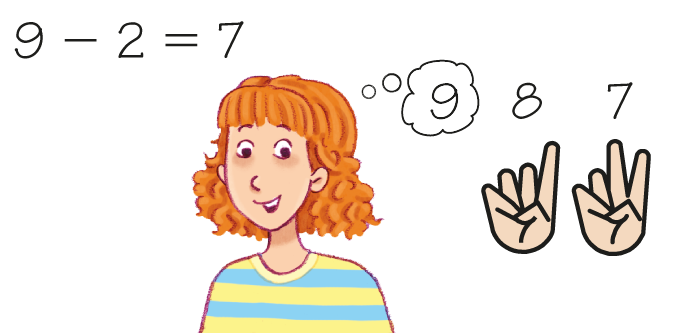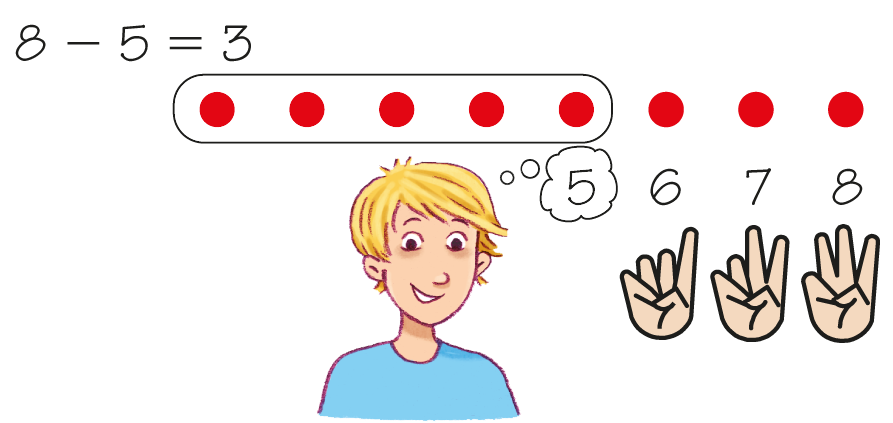Students solve different types of take away and comparison subtraction problems. They look at important information in each problem and discuss strategies and tools to solve them. After looking at models of subtraction word problems, students write their own problems.
Content in this Lesson
- Representing subtraction using multiple representations (e.g., stories, drawings, diagrams, counters,
number sentences, number lines,
ten frames) [E3]. - Solving subtraction problems using counting strategies and related addition facts [E5].
- Using mental math strategies and reasoning strategies (e.g., using doubles, using ten, making ten, reasoning from known facts) to solve subtraction problems within 20 [E6].
- Solving word problems (separate/take away and compare) involving two whole numbers with a sum within 100 using counters, drawings, number lines, and number sentences [E7].
- Knowing what is important to solve a problem [MPE1].
- Choosing good tools and strategies to solve a problem [MPE2].
- Checking for reasonableness [MPE3].
- Showing or telling solution strategies [MPE5].
- Using labels to show what numbers mean [MPE6].
Daily Practice and Problems G–J
Assessment in this Lesson
| ASSESSMENT | EXPECTATION ASSESSED | MATH PRACTICES EXPECTATION ASSESSED |
|---|---|---|
|
Can You Solve It with Feedback Box Student Activity Book Pages 117–120 |
|
|


















